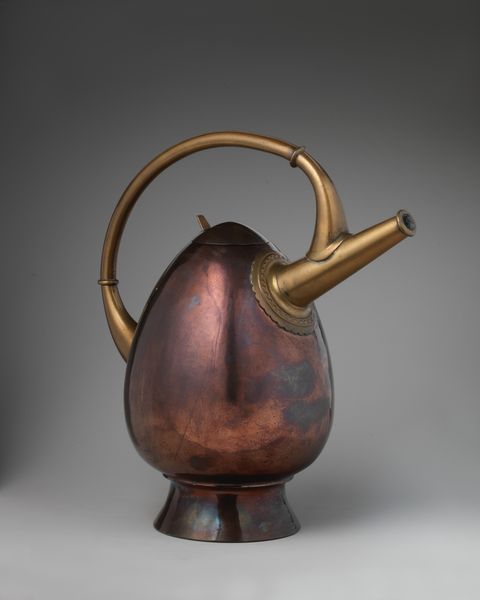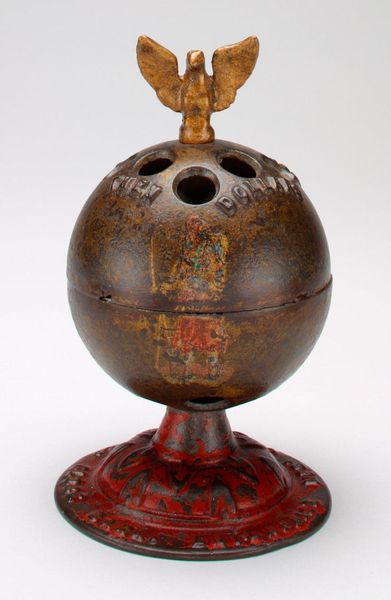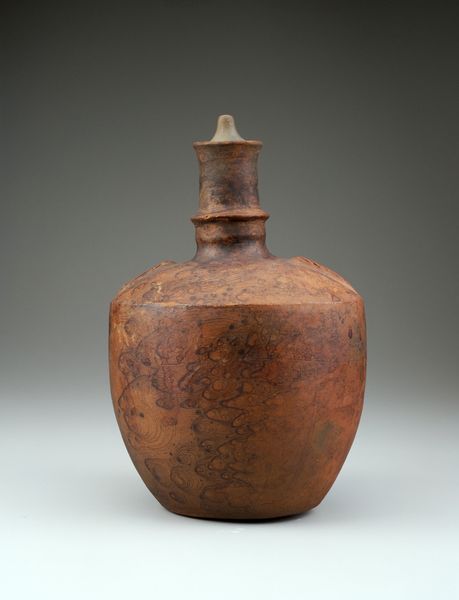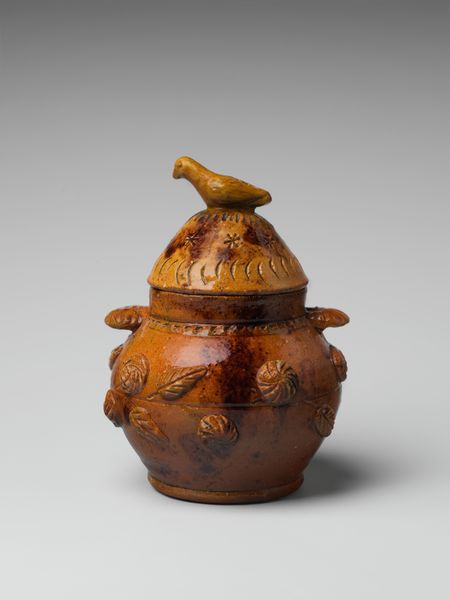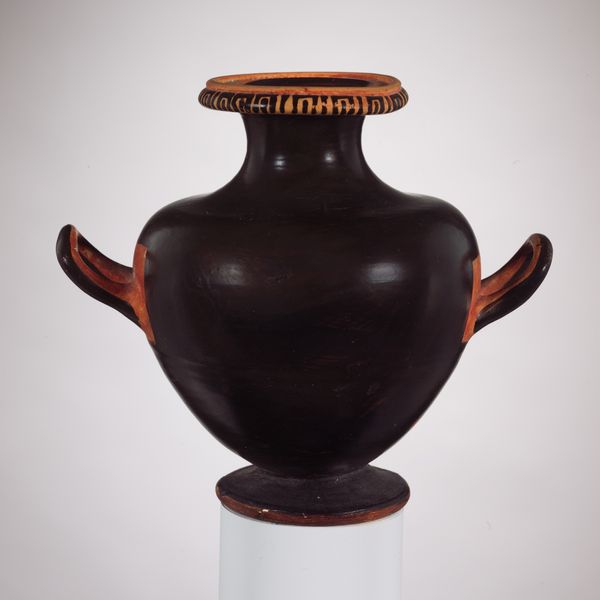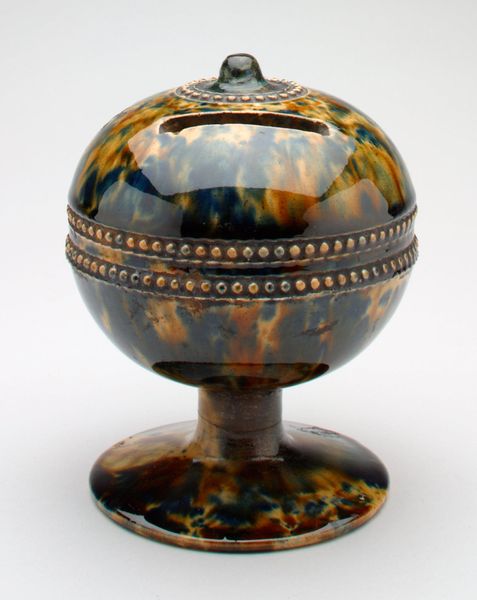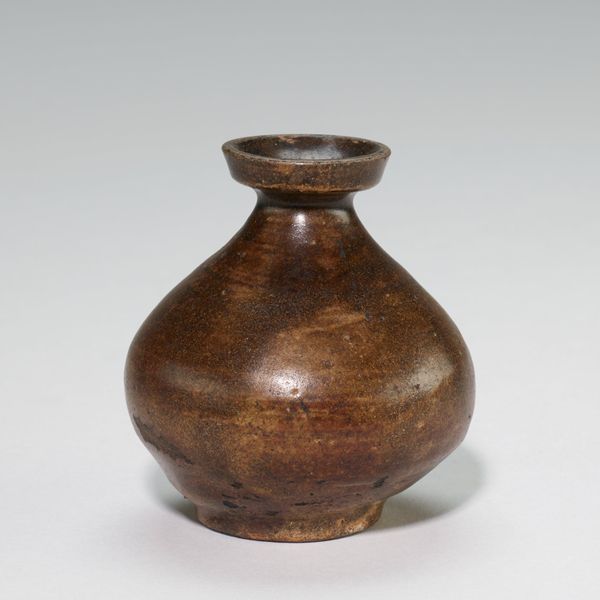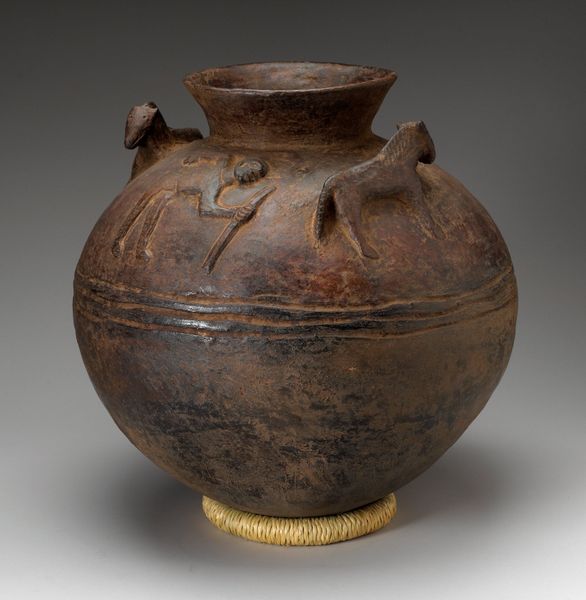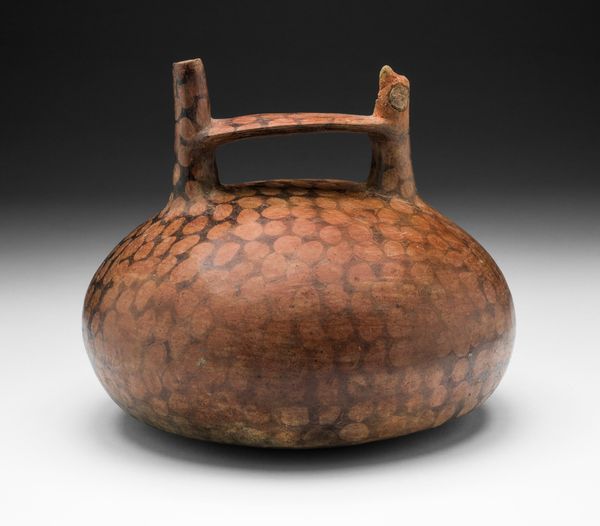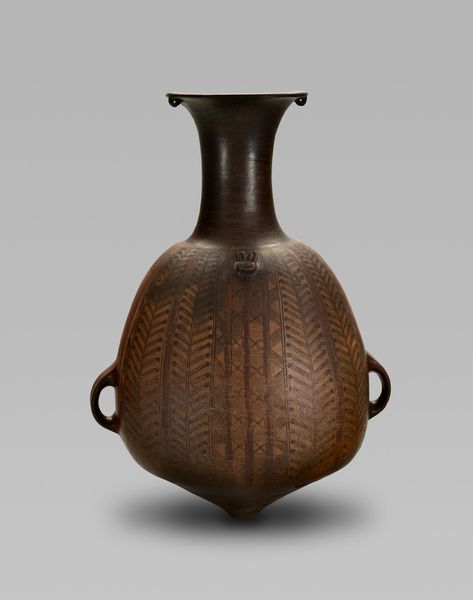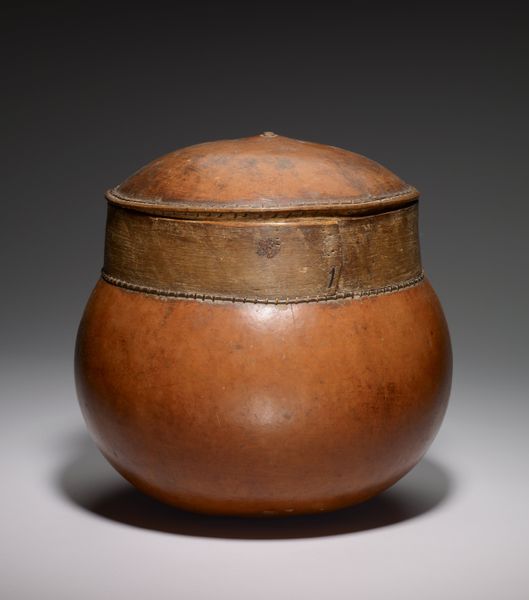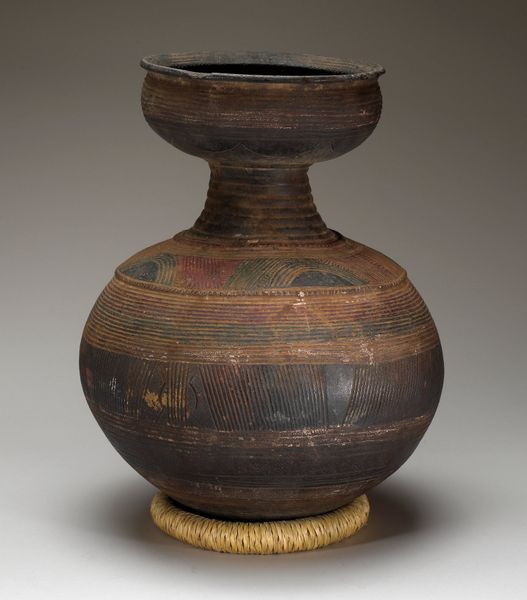
carving, sculpture, wood
#
african-art
#
carving
#
figuration
#
sculpture
#
wood
Dimensions: 13 7/16 x 9 x 6 3/4 in. (34.13 x 22.86 x 17.15 cm) (including attached base)
Copyright: Public Domain
Curator: The object before us is a Kongo ritual bell, dating back to the 19th century. It's currently part of the collection at the Minneapolis Institute of Art, showcasing artistic traditions from the Kongo people. The primary materials here are wood and carving. Editor: Immediately, I’m struck by the contrast. It seems so weighty, yet playful. The dark, burnished sphere supported by those stubby legs, topped with that almost comical figure—it exudes a powerful presence. Curator: It is a striking piece. Let's delve into that figure on top. Representations of animals were extremely common, laden with specific attributes and roles within Kongo belief systems. They also act as symbols of power, communication with the spiritual realm, and healing. Editor: Absolutely. To me, the quadruped perched atop reads as both guardian and messenger. Is this symbolic? I sense connections between the human and animal worlds being bridged here. We tend to find visual continuities and transformations of cultural significance over vast spans of time. Curator: I concur entirely with your observations about the piece. In terms of social context, ritual bells like this one played vital roles in various Kongo ceremonies. Their sounds, considered to possess spiritual significance, could invoke ancestors, ward off malevolent forces, or announce important events. They were frequently used during community gatherings, healing ceremonies, or initiations. This object illustrates the Kongo people's engagement with the spirit realm, as well as their reliance on visual symbols and performative activities to connect with both the tangible and intangible dimensions of existence. Editor: I find it interesting how something seemingly so simple—a sphere, some legs, an animal form—can be so rich in symbolic meaning, bridging material and spiritual worlds through rhythmic sound and visual cues. It calls us to engage in a call and response—to the cultural and mythopoetic power of rhythm. Curator: Indeed. And in a broader sense, the object provides us insight into the political uses of art as symbolic instruments which are designed for complex and nuanced messages. Editor: Well said. A humble object, yet it reverberates through centuries of Kongo culture, offering us echoes of rituals, beliefs, and the enduring power of symbolism.
Comments
No comments
Be the first to comment and join the conversation on the ultimate creative platform.
